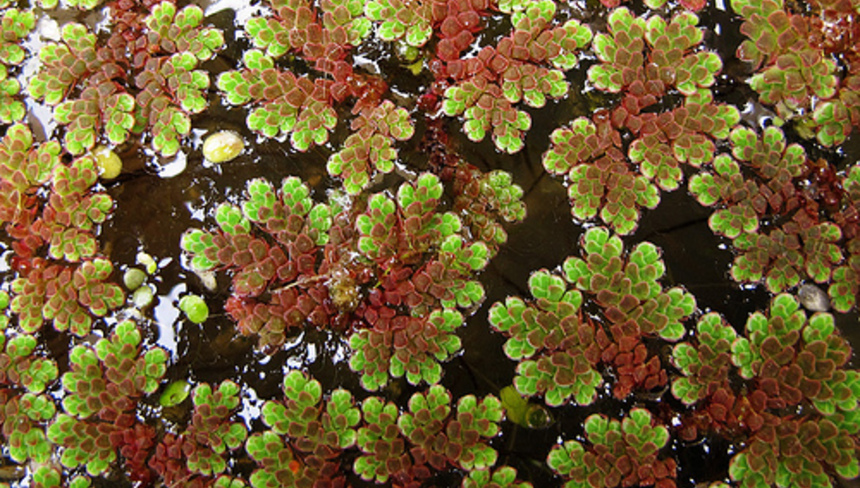Fern species and their classification
Content:
Ferns are among the few representatives of the flora world that have come to us from the Mesozoic era. Having captured the planet Earth 400 million years ago, they still live in almost all corners of the world.
What is fern

Fern in the forest
Fern is a unique plant that appeared 400 million years ago in the Devonian period of the Paleozoic era. At that time, it was widespread throughout the Earth in the form of huge tree and herbaceous ferns that existed until the beginning of the Mesozoic.
By definition, these are relict plants that have managed to preserve the comparative diversity of species to this day. Ferns are used in decorative and indoor floriculture, a number of species are used for food and as raw materials for pharmacology.
Fern classification in biology, description
Ferns, the species and names of which are detailed in the Polypodiophyta group, which classifies spore plants, are found in various ecological and climatic zones. This confirms the fact that hundreds of millions of years ago, these plants were distributed throughout the globe, like gymnosperms.

Ancient forest of the Mesozoic era with ferns
Two thirds of all their species live in the selva of South America, Australia and Southeast Asia.
The most widespread today are representatives of the Herbaceous family. Its species grow in shaded areas with high levels of humidity. Most of the plants are perennials. Annuals are a few representatives of ferns that grow in the temperate climate of middle latitudes.
Treelike species can be found today only in greenhouses and arboretums. A small number of representatives of Arbaceous ferns, which became completely extinct as a result of global climate change millions of years ago, researchers meet in impenetrable rainforests in wetlands.
Ferns are higher plants that have:
- roots;
- stem;
- leaves.
These ancient varieties of the highest form are divided into vascular and cellular, which are also called bryophytes.
Vascular ferns have fibrous vascular bundles that act as veins and deliver nutritious juices to the leaves. Others resemble mosses, they are called epiphytes, which in Russian means "growing on a plant."
Varieties of ferns determine the variety of their external forms. Tree ferns are like palms. There are species that do not have an aerial part, and aquatic species lack rhizomes. Some of them are perennials, others are annuals. The main difference between perennial species is the variety of leaf plates, which are called vayas. Thanks to this feature, these plants have become popular in ornamental gardening and indoor floriculture.
What is the characteristic of the plant? Ferns are distinguished by a complex structure, a variety of shapes, sizes and colors. They are perennial plants. Most of them are classified as herbaceous crops, but tree ferns are also rare.

The fern has a powerful rhizome
For plant propagation, it is enough to plant a small part of it.
Modern species
According to the biological classification, these plants form one class Polypodióphyta, in which there are 300 genera and 8 subclasses, of which 3 no longer grow on Earth. The various types of ferns that can be found today include more than 1,000 plants. The most common are:
- Maratha;
- uzovnik;
- real ferns;
- marsilian;
- salvinium.
In a sense, the Fern family still retains the diversity of species that was present in the Paleozoic era. Modern cultures have become smaller in size, having managed to adapt and spread widely after the global climate change of the Earth in the era of blooming flora.
Marattia
These are plant species, in the description of which 7 genera are listed. Their representatives grow in tropical humid climates. They create dense lianas.
Three genera are distinguished in this subgroup:
- Marattia, which includes 60 species of plants, the height of which reaches 2 m.
- Angiopteris, represented by 100 species, with a wide and thick tuberous stem, the diameter of which reaches 1 m. The leaves of this plant grow up to 5–6 m.
- Macroglossum. Endemics growing only in Sumatra and Kalimantan.

Genus Maratha ferns
Uzhovnikovye
Plants, most of which grow up to 40 cm in height, are considered one of the most mysterious. Among them there are representatives living in the tropics, which grow up to 4 m in height.
Three genera are represented in this view:
- The gingerbread man
- Helmintostachis.
- Moonwort.

The genus of supine ferns
Real ferns
The most common species that grow in different parts of the world in the forest. Among them are herbaceous and woody crops:
- Multi-tracked that love shady and damp lower tiers of forests.
- The bladder is brittle with poisonous leaves. It grows in highlands.
- Common ostrich with antihelminthic properties.
- Kochedzhnik female, actively used in decorative floriculture.
- Common bracken, which is used for food.

Fern Eagle is eaten
Marsiliaceae
Aquatic fern found in European and African waters. One of the representatives of this species is Azolla, which looks like a duckweed. Another popular species is Salvinia floating.

Azolla, which is popular with aquarists
In addition, species are distinguished, the names of which depend on the place of their growth:
- forest;
- rocky;
- water;
- marsh.
Some of them - forest, marsh and aquatic like high levels of humidity, others - rocky, grow well in arid conditions.
In addition, there are a large number of domestic varieties that are used in indoor and ornamental gardening:
- Maidenhair.
- Asplenium.
- Nephrolepis.
- Platiseritum.

The maidenhair that can be found in many homes
Life cycle features
To understand what this culture is, you need to know how it lives and reproduces. Since the fern does not bloom, it does not have seeds from which it can reproduce. The function of seeds in this plant is performed by spores.
Unlike all other plants, a fern lives a life cycle, during which it changes asexual generation to a sexual one. In the asexual stage, which is called the sporophyte, the plant forms sporangia on the underside of the frond (leaf plate). A number of ferns have special leaves on which spores develop. Such fronds are called sporophylls.
After the spores dissipate and germinate, an overgrowth appears, which is called a gametophyte. At this stage, the plant forms male and female reproductive organs: antheridia and archegonia. The spermatozoa of the antheridia enter the eggs of the archegonia. A new asexual sporophyte develops from the fertilized zygote, ending the life cycle of the fern.
How to breed in the wild and at home
In living nature, most often a plant of this type lives a long life cycle, which includes asexual and sexual stages. First, spores appear, from which a gametophyte grows, which has female and male sexual characteristics.
Like any higher plant, the fern can reproduce faster through vegetation. To do this, you just need to divide the fern root or an entire indoor shrub growing in a pot at home. In addition, you can propagate this ancient amazing plant with the help of:
- lateral buds giving broods;
- side shoots.
- dividing the bush;
- asexually using disputes.

Culture reproduces through spores
When a plant is propagated by spores at home, you need to use a special soil, which should include one part of sand and three parts of peat, or leafy earth. You can use ready-made peat for violets.
The spores collected in a paper bag from the underside of the fern leaf are scattered on the surface of the finished soil, which is well spilled with water. Cover the container with glass and put it in a warm and bright place. The fern is characterized as a heat-loving plant that grows in moist soil at a temperature of + 20 ... + 25 degrees.
Domestic ferns, most often experiencing only asexual stage of the life cycle, do not require special care. Subject to a number of simple rules, perennial crops can delight their owners for a long time with beautiful openwork fronds. To do this, you need to constantly maintain an optimal level of moisture in the earth, a suitable temperature regime and an acceptable level of lighting.
Tips for growing indoor and garden ferns
What is a fern for? Those who want to breed this plant should know everything about the fern, which is used in human economic activities.
Economic use
Fern can be used as a raw material for the food and pharmaceutical industries.
If plantations are required for the procurement of raw materials for the food and pharmaceutical industries, then it is possible to grow indoor and garden ferns even at home.Salads are made of them, dietary meals are prepared. When dried, they are used as condiments and spices.
Preparations based on this ancient culture heal long-lasting wounds, relieve rheumatic manifestations, headaches.
Ferns grow quickly, so they will have to be replanted at least once a year, replacing them with an earthen lump for a new one. This plant loves moist forest soil enriched with humus. When preparing new soil, it is imperative to use leafy humus, which is mixed with one part of the sand. Such land should absorb water well without forming stagnant moisture. The acidity level in the soil should be medium to high.
Decorative application
In addition, decorative species of ferns are very popular among fans of indoor and ornamental floriculture.
The plant grows very quickly with proper care. Home fern leaves are highly decorative, which makes them popular with indoor plant lovers and professional florists.
In the summer, you can create spectacular landscape designs from such plants by taking pots of flowers outside to decorate the local area of the suburban area.
Ferns are used by florists in drawing up various flower arrangements, so flower stalls will willingly buy them.

Fern farming can turn from a beautiful hobby into a successful home business
Fern in mythology
In Slavic mythology, there is a belief that the fern blooms on the night of Ivan Kupala. It is believed that whoever sees the fern flower will be happy and will be able to find the treasure.
It is difficult to show this beauty to everyone, since the fern flower lives for several minutes, after which it withers.
It was believed that whoever sees the flowering of this plant will be able to see treasures underground, foresee events and become invisible. For this, according to Slavic beliefs, a special ceremony must be carried out. It was also believed that during the flowering of this plant, people can meet with evil spirits that hunt for the mysterious fern flower, which is popularly called the heat-color.
Breeding indoor, ornamental, aquatic ferns can be a fun hobby or small business idea. Plants of this species are highly decorative and easy to care for, which makes them indispensable in floristry, landscape and interior design. There is also a great market demand for those crops that have nutritional value and are used as raw materials in pharmacology and cosmetology.















